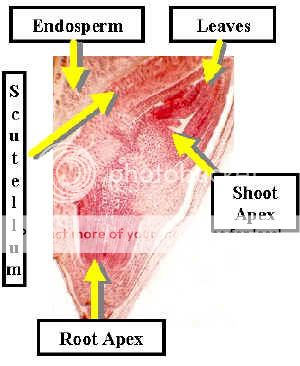Coyote
Well-Known Member
This raises interesting questions:
Fonz said: Science dictates that the first vestige of humanity does not reveal itself until at least day 12 -14. The fact is that the human embryos used (usually 5-7 days after fertilisation) are not humans, they are human cells. Cells make up humans. But the embryo is no more a human (that is, a human being or person) than a skin cell is.
I said: If there is a legal definition for "person" then there needs to be a legal definition for "human being" other wise a trophoblastic tumor could easily meet the definition of a human being. It contains all the genetic material, and is the embryonic product of an ovum and sperm.
Pale Rider said: Maybe there does need to be a legal definition for human being. Of course, that definition will be based on our best understanding of the science of human development and the more we learn, the more we know that we are human beings from the time fertilization is complete. If you are arguing that we should call trophoblastic tumor's human beings, fine. We only need wait a couple of weeks to determine whether it will continue during the normal human developmental cycle, or remain a tumor.
Trophoblatic tumors - start out as normal fertilized embryos much of the time. At some point something goes wrong. If you are basing your definition of "human" on the fact that it is genetically human, the product of a fertilized egg and sperm...then it is as human as a blastocyst.
An embryo is nothing more then a potential human until born or at least able to survive outside the mother. Should potential humans be accorded the same right as humans? Why should it have more rights than any other species or than it's mother?
Fonz said: Science dictates that the first vestige of humanity does not reveal itself until at least day 12 -14. The fact is that the human embryos used (usually 5-7 days after fertilisation) are not humans, they are human cells. Cells make up humans. But the embryo is no more a human (that is, a human being or person) than a skin cell is.
I said: If there is a legal definition for "person" then there needs to be a legal definition for "human being" other wise a trophoblastic tumor could easily meet the definition of a human being. It contains all the genetic material, and is the embryonic product of an ovum and sperm.
Pale Rider said: Maybe there does need to be a legal definition for human being. Of course, that definition will be based on our best understanding of the science of human development and the more we learn, the more we know that we are human beings from the time fertilization is complete. If you are arguing that we should call trophoblastic tumor's human beings, fine. We only need wait a couple of weeks to determine whether it will continue during the normal human developmental cycle, or remain a tumor.
Trophoblatic tumors - start out as normal fertilized embryos much of the time. At some point something goes wrong. If you are basing your definition of "human" on the fact that it is genetically human, the product of a fertilized egg and sperm...then it is as human as a blastocyst.
An embryo is nothing more then a potential human until born or at least able to survive outside the mother. Should potential humans be accorded the same right as humans? Why should it have more rights than any other species or than it's mother?

